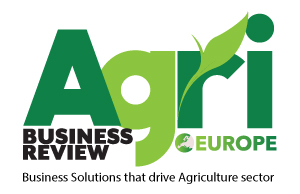Thank you for Subscribing to Agri Business Review Weekly Brief
Advancing Phosphate Fertilizer Services through Precision Agriculture Technologies
Phosphorus management transforms agriculture by using detailed soil testing and GIS mapping for targeted fertilizer application, enhancing productivity, profitability, and sustainability.

By
Agri Business Review | Tuesday, October 28, 2025
Stay ahead of the industry with exclusive feature stories on the top companies, expert insights and the latest news delivered straight to your inbox. Subscribe today.
Of all the essential nutrients that fuel global agriculture, phosphorus stands out as the "energy currency" of the plant —a vital component of adenosine triphosphate (ATP), which drives nearly every metabolic process, from photosynthesis to nutrient transport. It forms the structural backbone of DNA and RNA, the very blueprints of plant growth and reproduction. For decades, ensuring an adequate supply of this critical element has been a primary goal of farmers, often achieved through the widespread use of phosphorus-based fertilizers such as diammonium phosphate and monoammonium phosphate.
The Foundation of Precision
The journey into precision phosphorus management begins with intensive soil testing, a process that moves far beyond pulling a few random samples to create a single field average. Modern soil sampling is a systematic and granular endeavor. Using methodologies such as grid sampling or zone-based sampling, agronomists collect dozens or even hundreds of samples from a single field.
Each sample undergoes laboratory analysis to reveal not just the level of plant-available phosphorus, but also a suite of other crucial factors that influence its uptake. This includes soil pH, as extreme acidity or alkalinity can "lock up" phosphorus, rendering it unavailable to plant roots. It also measures organic matter, cation exchange capacity, and the levels of other key macro- and micronutrients. The result is a high-resolution dataset that paints a detailed picture of the nutrient landscape within the field.
This mountain of data is then brought to life through Geographic Information System (GIS) mapping. GIS technology serves as a powerful data visualization tool, converting soil test values into their precise GPS coordinates within the field. The software then interpolates this data to create intuitive, color-coded maps. These "prescription maps" are the strategic blueprints for phosphorus application. A farmer can, at a glance, see the nutrient variability across their land—zones of deep red indicating severe phosphorus deficiency, patches of yellow showing adequate levels, and areas of green where phosphorus is abundant. This transforms abstract chemical data into an actionable visual guide, clearly delineating where fertilizer investment is needed and where it would be redundant.
The Role of Variable Rate Application
With a precise prescription map in hand, the next step is to execute the plan with the same precision. This is accomplished through Variable Rate Application (VRA) technology. VRA represents the fusion of agricultural machinery with sophisticated GPS and computing power. Modern fertilizer spreaders and planters are equipped with onboard computers and rate controllers that adjust product application rates in real time.
The GIS-generated prescription map is uploaded to the controller in the tractor's cab. As the machine traverses the field, its GPS receiver constantly tracks its position with sub-inch accuracy. The controller references this position against the prescription map and sends continuous commands to the applicator. When the equipment enters a designated phosphorus-deficient zone, the controller signals the applicator to increase fertilizer flow to the prescribed rate. Conversely, as it moves into an area where soil tests have shown sufficient or high levels of phosphorus, the rate is automatically tapered down, sometimes to zero.
This effectively eliminates the guesswork and inefficiency of uniform application. No longer is the entire field treated as a single entity; instead, it is managed as a collection of dozens of unique micro-zones, each receiving a custom-tailored nutrient dose. This ensures that phosphorus is applied only where the crop needs it and in the amount it requires, maximizing the efficiency of every pound of fertilizer used. It is the ultimate expression of the agronomic principle of feeding the crop, not just the soil.
The Digital Ecosystem: Integrated Farm Management
The power of precision phosphorus is amplified exponentially when it is integrated into a holistic digital farm management platform. These cloud-based platforms serve as the central nervous system of modern agricultural operations, breaking down data silos and creating a unified, interconnected ecosystem. Soil test data and VRA prescription maps do not exist in isolation; they become dynamic layers within a much larger and richer dataset.
These platforms consolidate information from a vast array of sources. Yield data from the combine's monitor at harvest is overlaid with the original phosphorus application map, allowing a direct analysis of how different application rates across zones impacted the final yield. In-season satellite or drone imagery can reveal variations in crop health and vigor, which can be correlated with nutrient levels. Weather data, soil moisture sensor readings, and irrigation records are all integrated, providing a comprehensive operational view.
This integration transforms phosphorus management from a standalone task into a key component of a farm-wide strategic plan. Farmers and their advisors can analyze multi-year trends, refining their prescription maps season after season based on crop removal rates and yield performance. The platform facilitates better record-keeping for regulatory compliance and simplifies economic analysis, enabling precise calculation of the return on investment (ROI) for fertilizer inputs. By connecting the dots between soil chemistry, application technology, and agronomic outcomes, these digital platforms empower continuous improvement and smarter, more profitable decision-making.
The cost savings are even more direct and immediate. Phosphorus fertilizers represent a significant portion of a crop's input budget. By precisely targeting its application and eliminating waste, VRA can substantially reduce the total volume of fertilizer purchased. The savings from not applying expensive products to nutrient-rich areas can be substantial, often exceeding the initial investment in soil testing and mapping services. This targeted approach ensures that every fertilizer dollar is spent with maximum efficiency, directly contributing to the farm's bottom line and delivering a powerful return on investment.
The movement towards precision phosphorus management marks a pivotal evolution in agriculture. By harnessing the power of detailed soil testing, visualized GIS mapping, and intelligent Variable Rate Application technology, all integrated within a comprehensive digital framework, farming is shifting from a practice of averages to a science of specifics. This technological synergy is creating a future where agricultural productivity, economic profitability, and environmental sustainability are not competing interests, but parallel outcomes of a smarter, more precise approach to crop nutrition.





